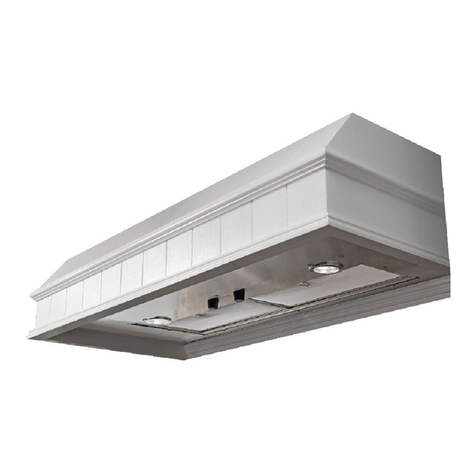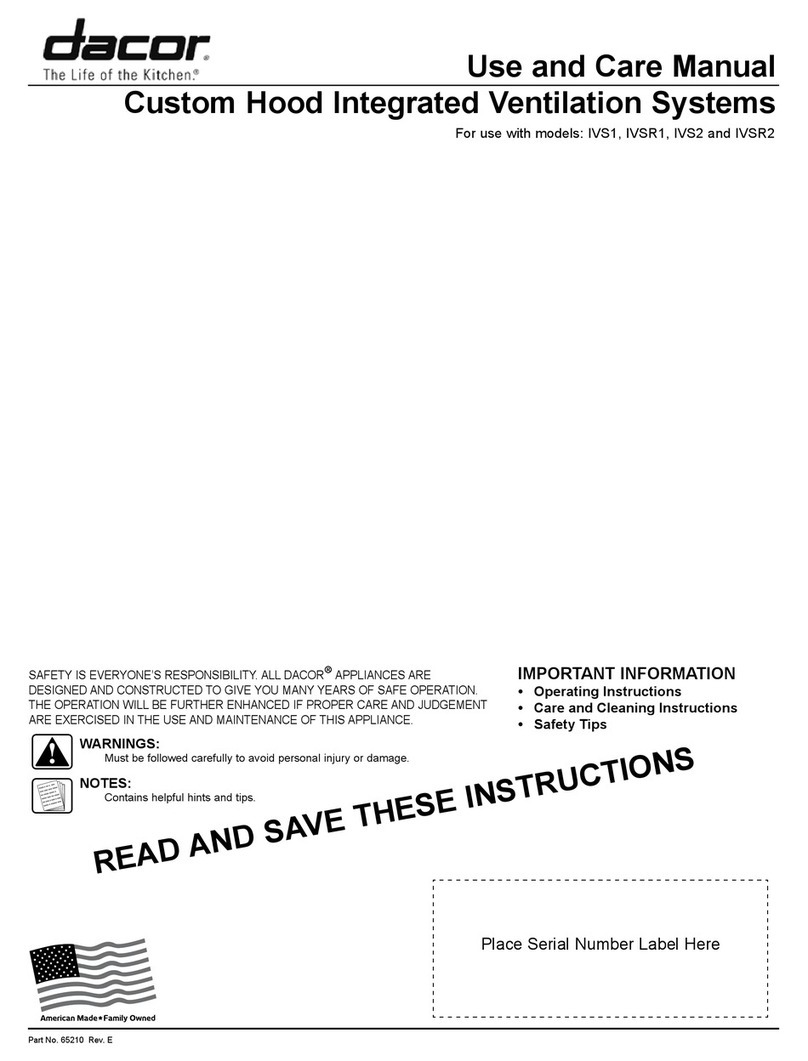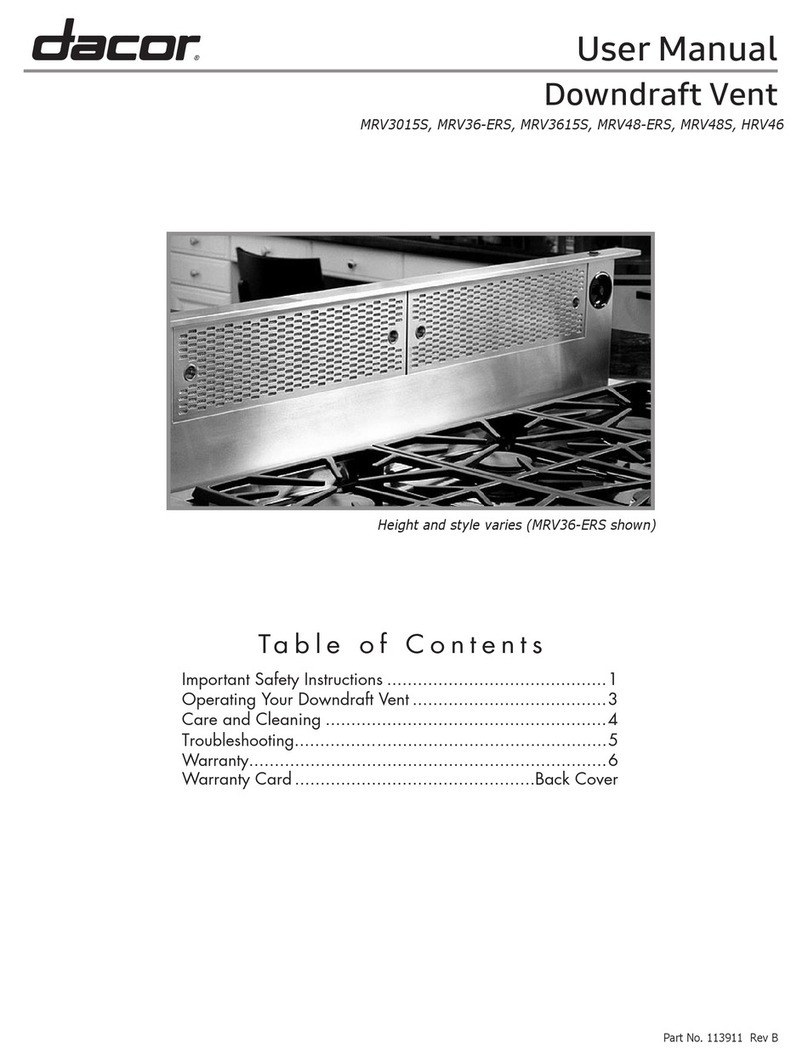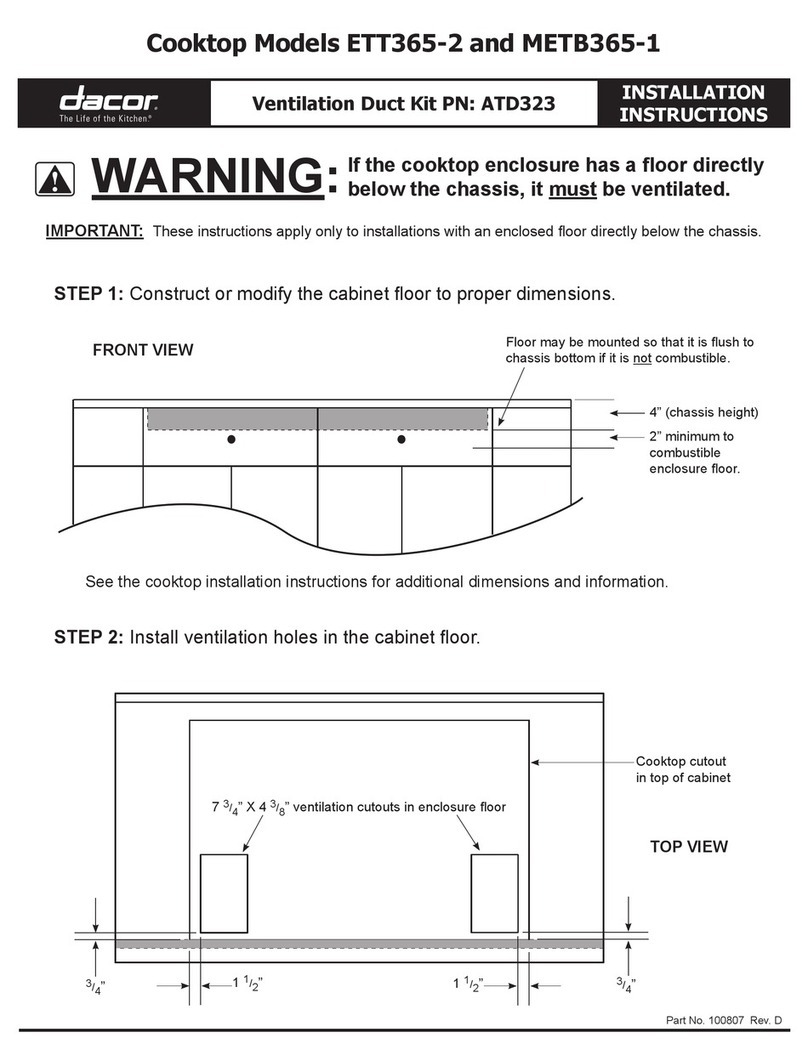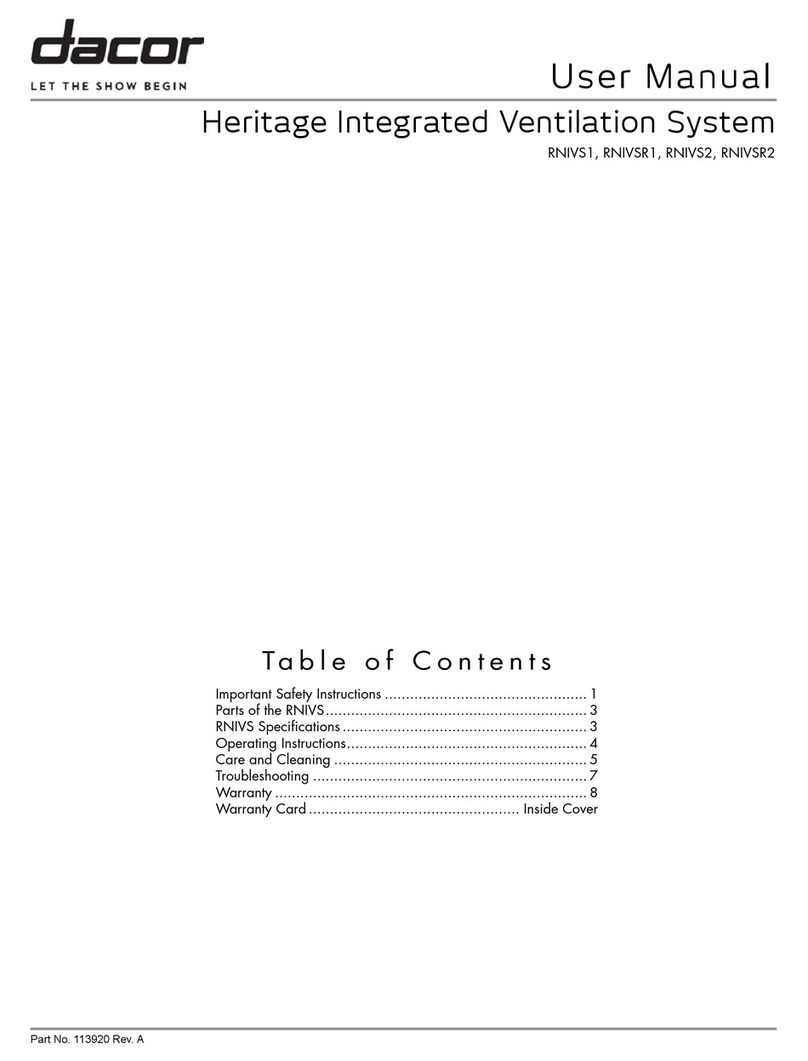
4
WARNINGS:
1. To reduce the risk of personal
injury caused by reaching
over a hot appliance, cabinet
storage space located directly
above the cooktop should be
avoided.
2. Do not store combustible
materials or items adversely
affected by heat in cabinet
areas above the appliance.
3. Follow the instructions
regarding minimum safe
clearances and installation
location. Failure to do so may
result in a fire or safety hazard.
NOTE:
When installing the cooktop and
vent into a laminated (Formica®,
etc.) or synthetic (Corian®, etc.)
countertop, follow the countertop
manufacturer’s instructions
regarding the minimum corner
radius, use of heat reflective tape,
reinforcement of corners, etc.
Plan the installation so that all required minimum
clearances between the cooktop, overhead
cabinets and adjacent vertical walls are
provided. Refer to the cooktop/range installation
instructions for the minimum dimensions specific
to the particular appliance being installed.
The DACOR Raised Vent System is designed
to remove the contaminants and by-products
that result when cooking with gas or electric
appliances. The vent system consists of the vent
intake along with a remote blower and a inline
blower if needed. The raised vent downdraft
systems are compatible for use with select
DACOR cooktops and ranges, therefore, these
instructions offer specific guidelines for mounting
the raised vents behind DACOR cooktops and
ranges.
t=max. backsplash thickness
25"
B
C
A
D
Combustible
Rear Wall
Cutout and Overall Dimensions
(CER304, CER365, ETT304, ETT365, SGM466, SGM464EM)
Countertop Preparation
Below Countertop Preparation
The raised vent intake, blower (in cabinet
mounted models only), and cooktop are
designed for installation into standard U.S.
made base cabinets. Before making the
countertop cutout, make certain that the cooktop
and vent system will clear the cabinet walls,
backsplash, and any wall studs along the back
wall within the cabinet.
Dacor
Model No.
Cutout
“A”
Cutout
“B”
Cutout
“C”
Cutout
“D”
Dimension
“t”, max.
Overall
Width
CER304 19 7/8” 28 1/2” 27 1/2” 2 3/8” 3/4” 30”
CER365 19 7/8” 34 1/2” 33 1/2” 2 3/8” 3/4” 36”
ETT304 19 7/8” 28 1/2” 27 1/2” 2 3/8” 3/4” 30”
ETT365 19 7/8” 34 1/2” 33 1/2” 2 3/8” 3/4” 36”
SGM304 22 1/4” 27 1/2” - - 3/4” 30”
SGM364 22 1/4” 33 3/4” - - 3/4” 36”
SGM365 22 1/4” 33 3/4” - - 3/4” 36”
SGM466 19 7/8” 19 7/8” 43 1/2” 2 3/8” 3/4” 46”
SGM464EM 19 7/8” 19 7/8” 43 1/2” 2 3/8” 3/4” 46”
NOTES:
1. If there is a backsplash with a
curved base at the countertop
level, then the clearance
behind the vent will be
reduced. Keep this in mind to
avoid interference.
2. If your cabinet differs from
the standard 24” deep, 36”
high cabinets shown in Figure
4, then adjust your cutout
locations accordingly to
prevent interference.
3. If a drawer or shelf is being
installed below a gas cooktop,
be certain to avoid interference
with the gas supply line and
the drawer or shelf.
4. For installation with gas
cooktops, a 90-degree elbow
must be connected to the
cooktop gas inlet to avoid
interference with the Raised
Vent plenum front.
Locate the house junction box adjacent to the
vent junction box found at the lower right of the
vent plenum.
t=max. backsplash thickness
25"
B
A
Combustible
Rear Wall
Cutout and Overall Dimensions
(SGM304, SGM364, SGM365)
Finished
Countertop
11/16" (17mm) to 3 11/16" (94mm)
to right of centerline
3 1/2" x 10 1/4"
(89mm x 260mm)
Optional
8"
(203mm)
30 13/16"
(783mm)
Rear edge of
cooktop/vent
cutout
plumbed down
Down Duct Cutout Dimensions
RV with CABP3 Blower
NOTE:
Access from the front of the
cabinet to the underside of the
cooktop, the vent system, and the
junction box must be provided
for inspection and service. Any
drawers or shelves placed below
the cooktop and in front of the
vent must be easy to remove for
access to the cooktop, vent and
junction box.
For installation of the raised vent system,
provide an opening in the countertop as shown
in the Countertop Preparation section. Position
the cutout so all required minimum clearances
are met. Make certain that the minimum flat
countertop area meets or exceeds the combined
overall width and overall depth, as shown.
NOTE:
Verify that the raised vent and
blower being installed are a
matched pair before beginning the
installation.







